Third-Party Logistics (3PL) Services & Guide
If you are an ecommerce business owner, order fulfilment is an integral part of your operations. As your business grows, you may find that fulfilling customer orders in-house is no longer feasible.
That’s where third-party logistics comes in. This guide will cover everything you need to know about 3PLs to decide if a 3PL partnership is right for you.
Request Fulfilment Pricing
We’ll get back to you within 24 hours. Privacy Policy
What is third-party logistics (3PL)? ShipBob’s expert definition
Third-party logistics (or 3PL) refers to the outsourcing of ecommerce logistics processes such as inventory management, warehousing, and fulfilment to a third-party business. 3PL providers allow ecommerce merchants to accomplish more, and equip them with the tools, infrastructure, and processes to automate retail order fulfilment.
We don’t know for sure who coined the term “third-party logistics,” but companies began trending toward outsourcing inbound and outbound logistics services to third parties in the 1970s and ‘80s.
With the introduction and growth of ecommerce in the ‘90s and 2000s, the term 3PL has become ubiquitous, and 3PLs have expanded their services beyond simply picking and packing to include supply chain integration, warehousing operations, and transportation services.
ShipBob’s 8 most valuable 3PL services
Beyond shipping orders, 3PL fulfilment services can vary depending on the provider you choose. Here are some of the most beneficial features and logistics services commonly offered by 3PLs.
1. Inventory management
Managing inventory involves much more than just storing your products. A 3PL should allow you to easily sync inventory with your online store, view real-time inventory levels at each 3rd party fulfilment centre, and provide the data you need to reorder inventory on time to prevent stockouts.
Once your 3PL receives and stores your inventory, you should be able to check the quantity on hand and units sold per day for each product. This offers full visibility into what is available to ship to your customers at any given time.
Depending on your 3PL’s technology and workflows, you may also be able to push real-time stock counts back to your store’s website, so your customers immediately know if items are out-of-stock.
As an expert supply chain partner, ShipBob offers brands a dashboard that tracks and records inventory data across sales channels and locations in real-time, so you can always access up-to-date inventory counts. ShipBob’s analytics dashboard also features key inventory metrics like inventory turnover, SKU velocity, and estimated days on hand that you can use to draw deeper insights and make more strategic inventory decisions.
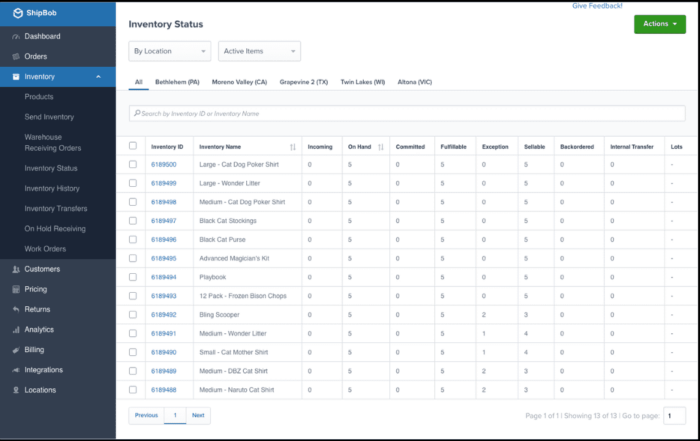
2. 2-day shipping
In today’s ecommerce landscape, cheap (or better yet, free) shipping is table stakes for online brands. Customers expect both fast and affordable shipping at the click of a button, and meeting this expectation is essential to keep shoppers coming back.
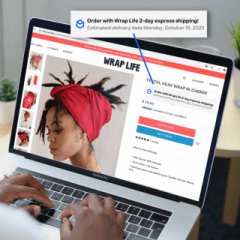
However, offering 2-day shipping without breaking the bank can be a struggle for growing businesses. By partnering with a professional 3PL, these brands can leverage their partner’s infrastructure, services, and relationships with major couriers to secure quick shipping at lower cost.
[Download: ShipBob’s 2-Day Express Shipping: How to Drive Revenue Through Ecommerce Fulfilment]
3. Distributed inventory
When working with a 3PL that has several warehouse locations, you can split inventory across fulfilment centres to ship each order out from the 3PL warehouse that is closest to your customer. This model is called distributed inventory.
With the right technology in place, 3PL companies can automate the order fulfilment process using powerful algorithms that route each order to the optimal fulfilment centre.
If your customers are geographically distributed across the country, you will likely want to distribute your inventory to multiple fulfilment centres. This puts your inventory closer to your shipping destinations, meaning you can offer guaranteed two-day shipping via ground for customers in those surrounding areas. This can be much cheaper than expedited air shipping.
Distributing inventory won’t necessarily be cost-effective for everyone, especially if you don’t yet have a high volume of shipments. But as your online business grows, having a network of fulfilment centres can help you efficiently reach more customers.
The viral cookware brand Our Place, for example, partnered with ShipBob for fulfilment and leveraged ShipBob’s Inventory Placement Program distributed their inventory across 4 of ShipBob’s dozens of fulfilment centres.
This allocation model enabled Our Place to save $1.5M in outbound freight costs, cut their shipping times in half, and enabled them to capture an additional $500,000 a day in revenue during the holiday season.

“By leveraging ShipBob’s US fulfilment network, we’ve significantly reduced shipping times. Previously, it would take us five to six business days to deliver items to customers. However, with the utilisation of four of ShipBob’s US fulfilment centres, the average delivery time has been reduced to just two and a half days from order receipt to customer receipt.”
Ali Shahid, COO of Our Place
4. Omnichannel fulfilment
Finding a 3PL that can handle both B2C and B2B fulfilment can make your life easier if you utilise a multichannel logistics strategy (or plan to in the future).
Whether it’s fulfilling subscription orders on your website, selling through TikTok Shop, or stocking your products on Target shelves, you should be able to centralise centralise multichannel inventory management and fulfilment through a single partner, acting as your back-end logistics hub.
ShipBob, for example, automates both DTC and B2B fulfilment for merchants. ShipBob’s B2B Fulfilment Suite and EDI capabilities enable merchants to sell throughout the entire B2B ecosystem, powering retail dropshipping (fulfilling orders placed on big box retailers’ websites) and wholesale shipping (including brick-and-mortar stores), which can connect with all the major retailers. We also fulfil orders that come in from social channels (such as TikTok Shop) and online marketplaces such as Walmart Marketplace, Etsy, and Amazon.
5. Returns management
3PLs can help your returns management process by restocking or disposing of returned items, and even integrating with returns software solutions to further streamline the experience for your customers. With ShipBob, you may choose to have returns restocked, quarantined, or disposed of, while gaining the visibility into ecommerce returns.
6. Kitting & customisation
Creating an unforgettable unboxing experience can help your brand stand out from the competition and leave a lasting impression. 3PLs can help enable this in the following ways:
Custom gift notes
You can offer branded, personal gift notes to your shoppers via 3PLs like ShipBob and have them printed at pack. ShipBob’s Premium Gift Notes lets you add a card stock gift note featuring your logo to their order, and even select handwritten font for the fully customisable message. These let your let your customers add heartfelt notes to their recipients.
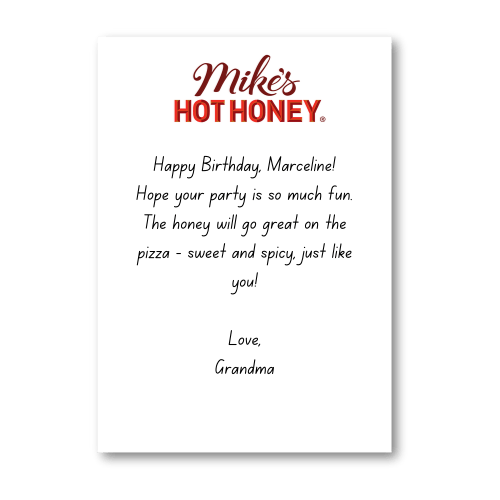
Marketing inserts
During the unboxing process, you have your customer’s full attention – so why not use that moment to promote your brand? Adding marketing inserts is a simple way to make a lasting impression by offering a discount on future purchases, announcing new products, or just including a special message from you to your customer.
ShipBob can print standard marketing inserts on demand for any order. Rather than spending time and money to source and ship pre-printed inserts, ShipBob lets you upload a design of your choice (which you can update at any time) and we’ll print it in colour on 4×6 inch cardstock at pack.
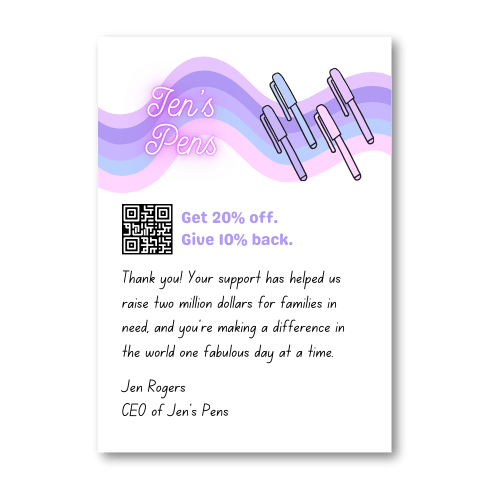
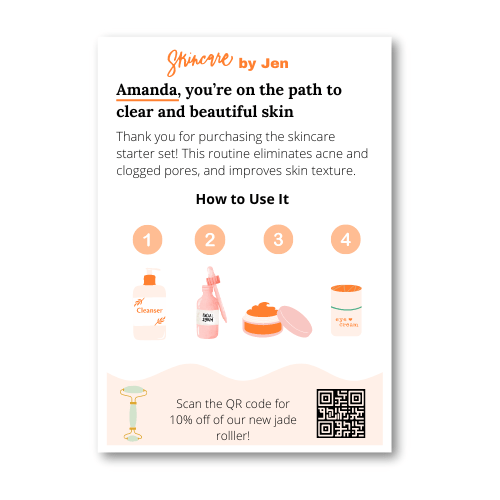
Custom packaging
Make a purchase memorable with custom packaging. 3PLs like ShipBob makes it easy for you to select packaging preference to find the right custom package size to use for any order combination, including custom branded boxes, custom mailer packaging types, and even branded inserts.
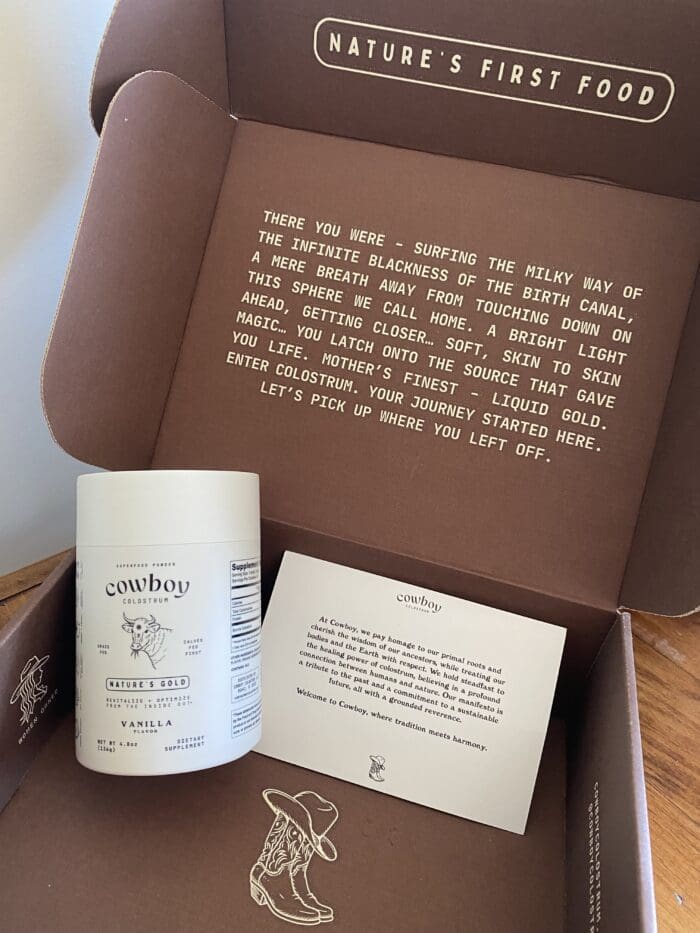
Kitting
Customise how your inventory is prepared for customers with kitting: a value-added service provided by most 3PLs (including ShipBob) that lets you tailor the packing process and add specific touches (e.g., for actions like adding a sticker to every order, adding your branded dunnage to the order, constructing boxes, wrapping items, sealing items with tape, and much more).
Custom sender labels
Drive brand recognition at order delivery with shipping labels that come “from” your brand. This helps create a best-in-class delivery experience from the moment your order reaches your customer’s door by adding your brand’s name (instead of the 3PL’s or shipping courier’s name) on the top left of the shipping label that’s on the outside of the box. 3PLs like ShipBob offer this at no extra cost.
7. Advanced data analytics
Data can be a competitive advantage for brands. 3PLs like ShipBob offer free analytics tools packed with charts and deep insights to help you with everything from year-end reporting, to improve supply chain decision-making (e.g., see how many days it takes your orders to be delivered, historical stock levels at any point in time in any location, average storage cost per unit, and much more).
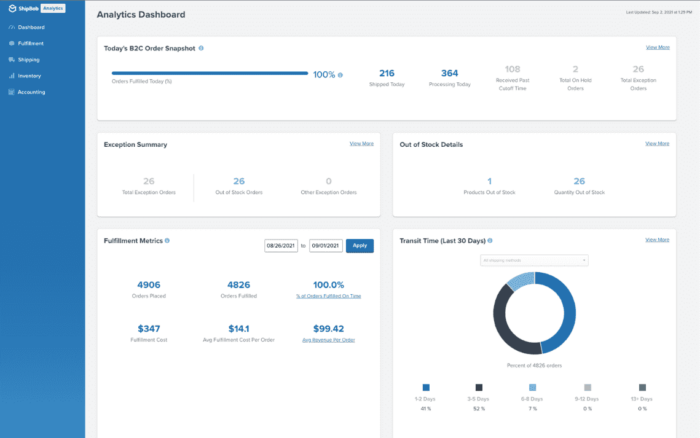
8. International fulfilment

When your 3PL has a physical presence in several countries (and even cross-border shipping solutions), it makes it so much easier for your brand to scale fulfilment globally. ShipBob, for instance, has fulfilment centres in the US, Canada, Australia, the United Kingdom, and Europe, which brands can use to store inventory closer to international customers to save money and time while minimising cross-border complexities.
When all of a 3PL’s fulfilment centres run on the same warehouse management system, use the same SLAs, and utilise the same support team, you get a true international fulfilment solution with one login to manage all warehouses, orders, inventory, and more. Every one of ShipBob’s dozens of fulfilment centres across the globe run on our proprietary WMS, so brands can achieve fulfilment consistency no matter where they ship to or from.
On the fence? 3 reasons to outsource fulfilment logistics to a 3PL like ShipBob
Most ecommerce stores, regardless of ecommerce platform, industry, or product category, can benefit from outsourcing fulfilment. Here are three signs you’re ready to outsource fulfilment to a 3PL.
1. You’re shipping over 100 orders per month
While there’s no magic number, if your order volume has increased to the point where you can’t keep up, it’s time to outsource to shippers. Similarly, if you’ve resorted to asking friends and family members to help you pack boxes or you’re staying up late in the night just to meet demand, you would definitely benefit from handing off fulfilment to a professional partner.
In these scenarios, you’re spending your valuable time on low-dollar activities – such as packing items, printing labels, driving to the post office, waiting in line, and so on – and missing the opportunity to acquire more customers, develop new products, and launch marketing campaigns. By outsourcing those low-value tasks to a 3PL, you’ll be able to devote more time to the activities that generate the most revenue and scale fulfilment more easily as your business grows.
2. You’re running out of space to store inventory
As your order volume grows, you’ll need more inventory on hand at any given time. If you’re fulfilling orders from home, it can be hard to find the storage space. A 3PL warehouse can save you from a garage or living room filled to the brim with product, and provide space that’s specifically desgined for fulfilment.
Outsourcing inventory warehousing and order fulfilment to a 3PL can help you stay organised and manage inventory more efficiently. You can also grow your product line without worrying about inventory storage limitations.
3. You want to offer free 2-day shipping
Amazon has made free 2-day shipping the standard for ecommerce. But if you’re self-fulfilling orders, offering free 2-day shipping can take a huge toll on your bottom line — especially if you’re offering expedited 2-day air rather than ground shipping.
Working with a 3PL can make offering free 2-day shipping more feasible and affordable for merchants of all sizes through 2-day express shipping options and by distributing inventory strategically across the country.
Success starts by partnering with ShipBob’s 3PL services
When YouTuber Josh Leyva and sports nutrition expert Tyler McCann started their drink mix business Taste Salud, neither was concerned about fulfilling orders. The pair focused on developing the product, designing packaging, and bringing it to market, assuming they’d ship out orders themselves.
But after selling out their first launch of 500 units in just a couple of hours, they quickly ran into trouble. They spent six or seven hours picking orders and packing boxes, and were up until 1:00 AM packing them. Right then and there, they knew fulfilling orders themselves was not sustainable, and that they needed to find a fulfilment partner.
Once they partnered with ShipBob for fulfilment, everything fell into place and Taste Salud was finally in a position to scale. And scale they did; they grew from $0 to over $20M in sales in just a few years, expanded into new B2B channels, and distributed their inventory across the country – all without any problems keeping up with fulfilment.
“Personally, when I hear about people trying to do their own fulfilment, I’m kind of skeptical. Having gone through that experience of packing orders, I would tell anyone that’s thinking about starting a business that it’s really, really well worth your time to consider partnering with a professional like ShipBob. A lot of people think, “I don’t need that,” or “I don’t want to waste money on a fulfilment provider.” But in reality, partnering with an expert like ShipBob will free up so much of your time, speed up shipping, and lead to a better customer experience.”Tyler McCann, Co-Founder of Taste Salud
A deep dive into the 3PL order fulfilment process
If you’re considering working with a 3PL company or are new to outsourcing shipping, what goes on in a 3PL fulfilment centre may seem like a black box.
But the 3PL fulfilment process doesn’t have to be a mystery, nor should it be!
So what exactly happens at a 3PL’s ecommerce warehouse once a customer clicks “Place Order” on your online store? Let’s explore the entire process from start to finish.
Receiving
A 3PL can’t ship orders without inventory on hand. The “receiving” of inventory in a 3PL warehouse refers to the process of checking, recording, and stowing incoming inventory.
Each 3PL has its own processes and capacity for receiving and storing inventory.
For example, at ShipBob, we require clients to fill out a Warehouse Receiving Order (WRO) so that we know which products we will be receiving and how many units. This helps us stay organised and timely with receiving, meaning we can start fulfilling your orders more quickly and efficiently.
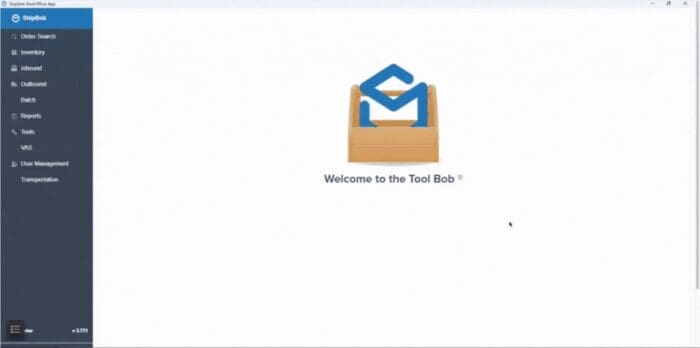
Warehousing
Once your fulfilment partner receives your inventory, warehouse workers, we store your items in the fulfilment centre. Each SKU has a separate dedicated storage location, either on a shelf, in a bin, or on a pallet.
Different 3PLs have different storage capacities; not all 3PL warehouse space is created equal. It’s important to work with a 3PL that has more than enough storage space for your current inventory — as your product line and order volume grow, your 3PL storage must be able to scale with you.
Note: A 3PL is different from an on-demand warehousing company that just matches you with excess space in miscellaneous warehouses without operating any logistics centres themselves.
Picking
When a customer places an order, it’s time for the 3PL fulfilment process to begin. (You may have heard the phrase “pick-and-pack fulfilment” before — this is the first half of that.)
Some 3PLs require you to manually upload orders to their system. Sometimes, this involves spreadsheets including order details, customers’ shipping details, and more. This can be an inefficient and complex way to manage orders.
Other 3PLs have sophisticated technology that integrates directly with your ecommerce platform or marketplace. These 3PL fulfilment software integrations bring orders, shipments, inventory tracking and stock levels, and more together in one place to streamline the fulfilment process for more automated shipping. This includes automatically pushing customers’ online orders to your 3PL as soon as they’re placed.
When an order is sent to your 3PL, it is assigned to the warehouse picking team. The picker receives a picking list of the items, quantities, and storage locations at the facility, and goes through the aisles collecting the ordered products from their respective locations.
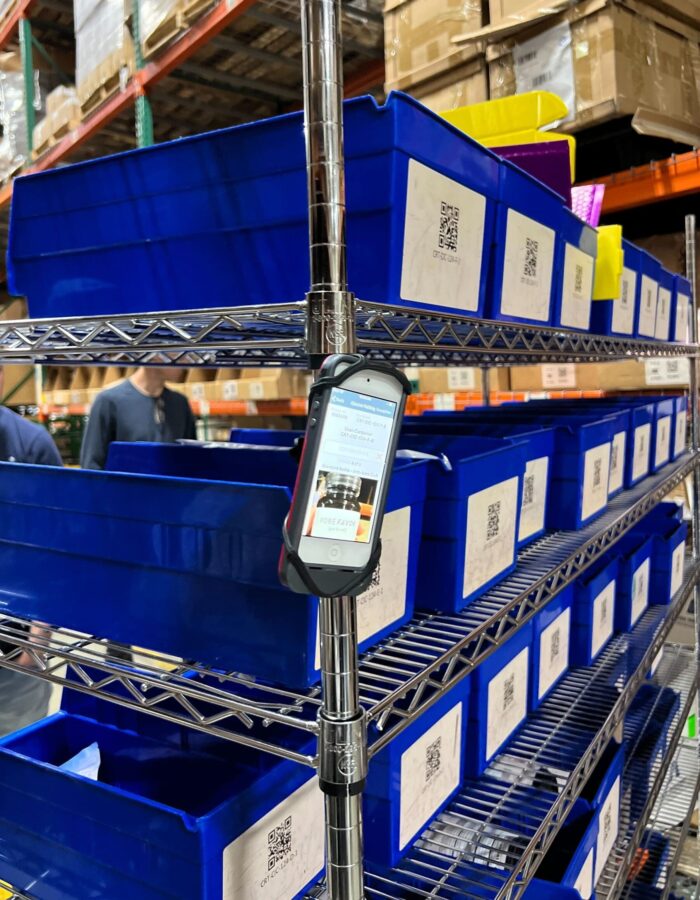
Packing
When all items in an order have been picked, it’s time to get them securely packed for shipping. The packing materials used will depend on your 3PL’s capabilities, your brand’s preferences, and the items being shipped.
The most common standard packing materials include:
Some 3PLs will charge for packing materials as a separate line item, while others include them as part of their fulfilment management services.
As experienced shippers, the 3PL will choose the best packing materials to both protect your products and achieve the lowest practical dimensional weight. They will also optimise packages so that you don’t have to split shipments.
Dimensional weight is a shipping pricing technique that takes into account package dimensions to determine shipping rates. Using the correct box size and the right packing materials can help keep logistics costs low.
If you want your brand to shine through your shipping, make sure you partner with a 3PL that allows you to use custom packaging, such as custom boxes and inserts. Oftentimes, receiving a package is the first in-person experience a customer has with your brand, so branded packaging can make a big impression.

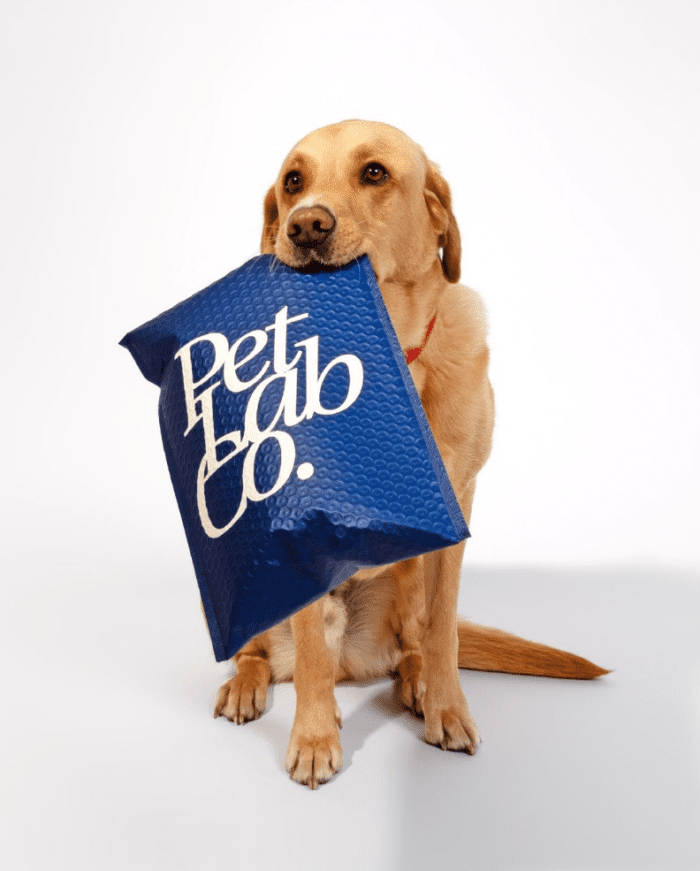

Shipping
The next step is shipping your order. Most 3PLs will purchase and print shipping labels on your behalf. Some 3PLs have preferred courier partners, while others compare shipping costs from a variety of couriers. The latter helps 3PLs offer clients the most affordable pricing possible for the delivery speed that each customer chooses.
Couriers such as DHL, USPS, and UPS pick up orders from 3PL warehouses to ship. The courier and shipping speed for each order depend on the 3PL’s partnerships and policies as well as the ship options offered by the client and selected by the end customer.
Once the order ships, 3PLs with the integrated technology mentioned above will automatically push tracking details to merchants’ online stores.
Returns
Many 3PLs also offer return processing services. If a customer returns an order by shipping it back to your 3PL, your 3PL will process the return and restock or dispose of the item depending on their policies and your preferences.
You can choose to have your 3PL provide return shipping labels for your customers. This offers convenience for both you and your customers; you won’t have to handle returns in-house, and customers can easily track the status of their return order.
What are the benefits of working with a 3PL?
There are many benefits to outsourcing fulfilment to a good 3PL. Here are some of the most notable advantages that ecommerce businesses see when they partner with an expert supply chain and fulfilment platform.
1. Save time and money
As your business grows, fulfilling orders yourself becomes more and more expensive. These costs include warehouse space, forklifts and other equipment, warehouse management software (WMS), recruiting and labour costs, workers comp, and liability insurance.
By investing in a partnership with a 3PL, you eliminate the need to buy or rent the warehouse space, logistics operations, labour, and technology required for in-house fulfilment and warehouse management.

You also save time by outsourcing fulfilment tasks to a 3PL. Instead of spending time packing boxes, standing in line at the post office, or building out fulfilment infrastructure, working with a 3PL gives you time back to focus on more strategic initiatives, such as product development and marketing.
“Logistics can be so challenging and tedious, and it takes up so much time. We’re such a small team and we all wear so many different hats, so we needed a fulfilment partner that was able to take care of the logistics piece for us. It’s great that we found ShipBob and have them as our partner. In order for us to do what ShipBob does, we would have to hire 10 or more employees. It’s crazy to think how much ShipBob does.”
Callie Tivnan, E-commerce Manager, and Christina Williams, Customer Success Manager at Barefaced
2. Leverage industry expertise
As an ecommerce merchant, chances are you don’t have the time to become well-versed in every detail of shipping and logistics. That’s where a 3PL comes in: staffed by ecommerce logistics professionals, your 3PL will be knowledgeable and up-to-date with the latest industry trends and complexities, so you don’t have to be.
3PL companies also have the technical resources and partner network — including marketing agencies, custom packaging providers, and more — that allows them to constantly improve supply chain efficiency and make supply chain optimizations to help drive ecommerce success.
“We aren’t experts in warehousing and fulfilment. While we obsess over getting it right, we know that we are currently better served in finding a partner who makes it their job to care as much about our business, our products, and customer experience as we do. Some of the largest petcare companies are based in the United States and being a UK-based brand, ShipBob helps us bridge the gap with a strong presence covering all regions of the US.”
Stephanie Lee, COO at PetLab
3. Expand your reach
If you’re only selling in one region or on one channel, you’re limiting your business’s potential. Working with a 3PL can help you expand your reach into new sales channels and geographies.
The right third-party logistics company will have an expansive network of fulfilment centres that in-house fulfilment lacks. Some expert fulfilment partners like ShipBob even offer analytics tools to help you determine which fulfilment centres to use based on your actual order data and historical sales trends to minimise shipping costs and times.

A good 3PL will also integrate directly with all your sales channels and offer retail dropshipping and distribution services to help you establish an omnichannel fulfilment strategy. That way, you can fulfil all your orders through the same partner, simplifing your life and streamlining your operations.
How to choose the best 3PL company
Partnering with a 3PL company may seem like a no-brainer by now — after all, it can help your business save time and money, freeing up resources to focus instead on product development, marketing, and business growth.
However, when it comes to choosing a 3PL company to handle your online store’s order fulfilment, the options can seem endless.
It’s important to find a fulfilment company that you trust to handle your inventory, provide a positive customer experience, maintain high customer satisfaction, and ultimately help you grow your business.
“I felt like I couldn’t grow until I moved to ShipBob. Our old 3PL was slowing us down. Now I am encouraged to sell more with them. My CPA even said to me, ‘thank god you switched to ShipBob.’”
Courtney Lee, founder of Prymal
Here are five paramount questions to ask a potential third-party fulfilment provider to make sure you find a partner that is a great fit for your business.
1. Can their capabilities scale with your brand?
Switching to a new 3PL provider can be frustrating, time-consuming, and expensive – so to save yourself the struggle, make sure that you find a fulfilment partner that has all the services, offerings, and capabilities you anticipate needing as you grow your business.
For many ecommerce brands, this includes the following:
- Omnichannel fulfilment solutions: Your 3PL should be able to fulfil all your orders, no matter which sales channel they come through. Look for a fulfilment partner that can handle retail distribution and dropshipping, and that supports fulfilment for marketplaces like Amazon and social channels like TikTok Shop.
- Customisation features: No matter how big you grow, your brand should have the option of adding personalised touches to the unboxing experience such as gift notes, marketing inserts, and custom branded packaging.
- Flexible fulfilment capacity: Surges in order volume will only get larger – and more common – the bigger you scale. Your fulfilment provider should be able to scale up labour and warehouse operations to process peak order volumes without sacrificing accuracy or speed.
- A global network: As your brand expands into new international markets, the right fulfilment partner will offer both cross-border shipping solutions and fulfilment centres in or near the countries that you plan to ship to, so you can reduce shipping costs and times for customers in those regions.
- 2-day shipping options: 2-day shipping is now tablestakes for ecommerce brands. Whether through express shipping options or distributing inventory strategically, your 3PL should enable you to make 2-day shipping affordable for customers.
- A warehouse management system (WMS): If you think you may want to bring fulfilment in-house eventually, consider partnering with a 3PL that lets you use its warehouse management software in your own warehouse or that offers a hybrid solution where you can leverage their warehouses as well as your own to scale up capacity with less investment.
ShipBob, for example, offered nutrition brand Bloom Nutrition all the capabilities it needed to scale fulfilment, including customised packaging, distributed inventory, retail integrations, and omnichannel data. With a fulfilment that could evolve to meet their needs, they grew from an idea to a nine-figure brand.
“The reality is, when you do what Bloom’s done and scale to millions of orders in just a few years, you outgrow many of your partners. There’s nothing wrong with that – it’s just really uncommon to find a fulfilment provider that can keep meeting your needs as you grow exponentially. But that’s the niche that ShipBob has created.
ShipBob is the rare fulfilment partner that’s built out the services and capabilities successful brands will eventually need, so that as they grow and want to branch out into new geographies, channels, and capabilities, they don’t have to change fulfilment providers.”
Neil Blewitt, SVP of Operations at Bloom Nutrition
2. How does their technology work?
One of the most important elements of choosing a fulfilment solution is finding technology that works not just for you, but with you. The right 3PL’s technology will:
- Be easy to use, intuitive to navigate, and simple to train your team members on.
- Be cloud-based and accessible from anywhere in the world at any time.
- Integrate directly with your ecommerce platform (e.g., Shopify, BigCommerce, WooCommerce, etc.), along with major ecommerce retailers, marketplaces, social channels, and tools.
- Automate processes (especially repetitive or low-value tasks) wherever possible for efficiency and cost-optimisation
For instance, viral cookware and kitchenware brand Our Place knew that to reach the next kep growing, they needed a fulfilment partner that had industry-leading technology. When they partnered with ShipBob, they found exactly what they were looking for – a technical framework built to accommodate scaling operations, deep analytics and reporting capabilities, and a WMS equipped with multiple checks and balances.
“Another essential criterion for selecting a fulfilment partner was their superior technical proficiency. For us, technical prowess holds equal significance to operational excellence. Comparing ShipBob’s platform to other fulfilment providers, it’s challenging to find a match for its extensive technical capabilities.
ShipBob’s architecture is exceptionally robust, underpinning a comprehensive technology stack that seamlessly scales to accommodate businesses transitioning from small to mid-market and beyond.”
Ali Shahid, COO of Our Place
3. Is their service reliable?
The whole point of outsourcing fulfilment to a 3PL provider is to increase efficiency, reduce errors, and free up your time. If your fulfilment partner is not reliable or their services are not high-quality, you will just end up creating more problems than you solve – and possibly damage your brand’s reputation in the process.
Therefore, it’s important to evaluate several criteria regarding a 3PL partner’s performance and trustworthiness.
1) What are their SLAs? A 3PL should be able to provide you with certain service level agreements (or SLAs) detailing what performance standards they will maintain in their services. Specifically, you’ll want to find out their SLAs for:
- Receiving inventory at a warehouse
- Shipping
- Kitting
- Returns
- Processing claims
2) What are their order accuracy rates? Mistakes are inevitable in logistics, but your 3PL should have extremely high picking accuracy, OTIF (On Time In Full), and perfect order rates. ShipBob’s order accuracy rate, for example, is 99.95%, with 99.98% of order shipping on time within their SLA.
3) How is their customer service? You shouldn’t just be able to reach your 3PL’s customer support line for help; your 3PL should also offer you a responsive support team that is familiar with your account and proactively troubleshooting on your behalf.
Luxury perfume brand Dossier knows the importance of reliable fulfilment. Having a fulfilment partner like ShipBob that just gets things done has enabled them to ship millions of orders and expand into nearly 4,000 Walmart stores with peace of mind, knowing their fulfilment is taken care of.
“If I never hear the word ‘ShipBob’”’ in any conversation I have with my team, that means things are going really, really well – and I rarely hear it. I think that speaks to the reliability of ShipBob’s service. You know things will get done – it’s as simple as that. Having that peace of mind is incredibly valuable.”
Sergio Tache, Founder and CEO of Dossier
4. What data and reporting do they provide?
With insight into your business’s data, you’ll know how your brand is performing and what you need to improve to achieve your goals. It’s essential that a 3PL partner track and deliver real-time visibility into inventory, order, fulfilment, and shipping metrics, so that you have the information you need to optimise your operations and make more strategic decisions.
Some of the most important metrics you should have access to include:
- Up-to-date inventory levels by location and channel
- Inventory holding costs
- Inventory turnover and SKU velocity
- Order cycle time
- Average fulfilment cost per order
- Average shipping cost
- Average transit time
- Average US Zone
- On-time delivery
“I can’t say enough about ShipBob’s software and reporting capabilities. It really has made things easy for us to look at the data and make better decisions. Not all partners are set up that way – oftentimes when you’re using other providers’ technology, you have to pull the data yourself, and there’s a lot of work to be done on the back end. I often brag about ShipBob’s software.
We’ve actually shown it off to other software partners to say, ‘We want your system to tell us the things that ShipBob’s software tells us.’ You can tell that ShipBob’s platform was built with the mindset of making their customers’ lives easier.”
Ryan Steffenson, Senior Manager, Channel Operations at Tonies
5. Where are their fulfilment centres located?
When it comes to considering a 3PL’s location, we aren’t just talking about where their headquarters or offices are. You also need to know how many fulfilment centres the 3PL owns and operates, as well as where each one is located.
This information will help determine if you can offer the fastest delivery and most affordable 3PL shipping options to your customers. As mentioned above, the number and location of 3PL warehouses can help inform your shipping strategy, including distributed inventory and two-day shipping.
Supplement brand Semaine Health, for example, was able to save $2/order on fulfilment costs and cut their shipping times by a third after they used ShipBob’s Inventory Placement Program to distribute inventory to 4 of ShipBob’s fulfilment centres.
“We technically offer 2-day shipping to customers at checkout for a premium. But with the Inventory Placement Program’s strategic inventory distribution, most of our standard orders are delivered in two days anyway! It’s been incredible watching our shipping times get shorter and shorter just using standard delivery, simply because we expanded to more fulfilment centres through ShipBob.”
Matt Crane, Co-Founder and Chief Science Officer at Semaine Health
For more information on how ShipBob can help you optimise your supply chain operations, click the button below.
Third-party logistics (3PL) FAQs
What are the top 3PL companies?
Now you know what to look for in a 3PL shipping solution, but always remember to choose a solution that fits in with your business. Extra hassle and clunky software doesn’t help you get orders out sooner.
Here are some of the top ecommerce shipping companies and 3PLs:
- ShipBob
- FedEx Supply Chain
- Rakuten Logistics
- RedStag
- UPS Supply Chain Solutions
- Shopify Fulfilment
- Shipwire
How does 3PL pricing work?
3PL pricing varies depending on the provider and your specific business needs, but there are some common costs at play.
- Onboarding costs: Fees for setting up your fulfilment services.
- Receiving costs: Charged for receiving and storing inventory, which can be based on units, pallets, or time.
- Storage fees: Costs for warehouse space, usually per bin, shelf, or pallet.
- Pick and pack fees: Some 3PLs charge per item picked; others, like ShipBob, include it for orders with fewer items.
- Packaging costs: May cover boxes and materials, depending on the 3PL.
- Kitting fees: Charged for special packaging or assembly needs.
- Shipping costs: Based on factors like speed, zones, and weight.
When should you use a 3PL?
You should consider using a 3PL when:
- You’re running out of space to hold inventory
- You’re spending hours fulfilling orders each day and still can’t keep up
- You want to offer customers affordable 2-day shipping
- You’re growing quickly and need a scalable fulfilment strategy
If any of the above are true, it’s probably time to consider outsourcing to an expert supply chain and fulfilment partner like ShipBob.
How do you measure 3PL performance?
Once you have selected a 3PL company to handle your shipping logistics, it’s important to continually measure for performance by looking at different KPIs. Rate of returns due to shipping damage or error, for example, is a KPI that ensures a continued focus on shipment quality and accuracy.
Another important shipping KPI to track is on time delivery. This KPI provides insight into whether or not there is a bottleneck in the current fulfilment process that needs to be addressed to provide maximum efficiency.